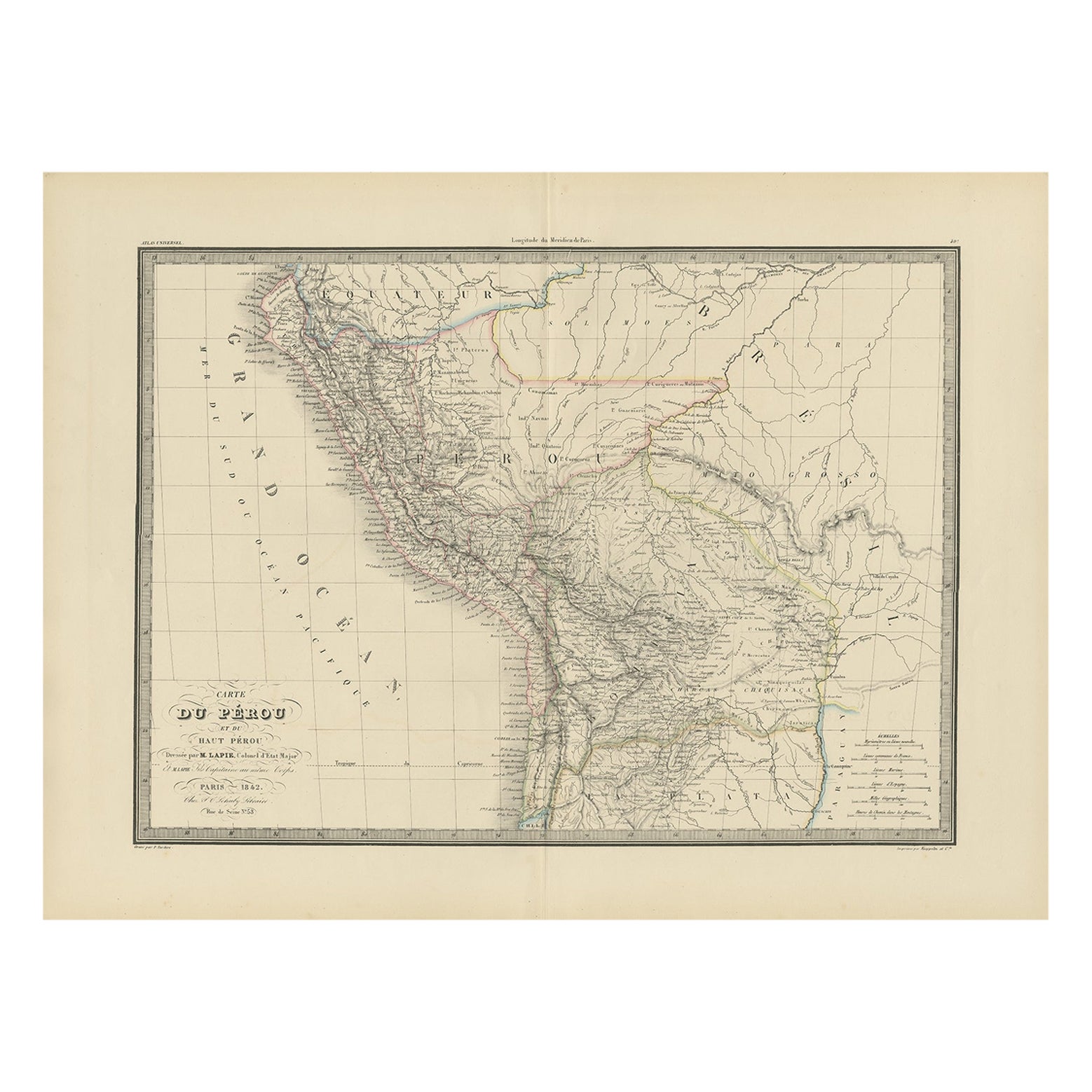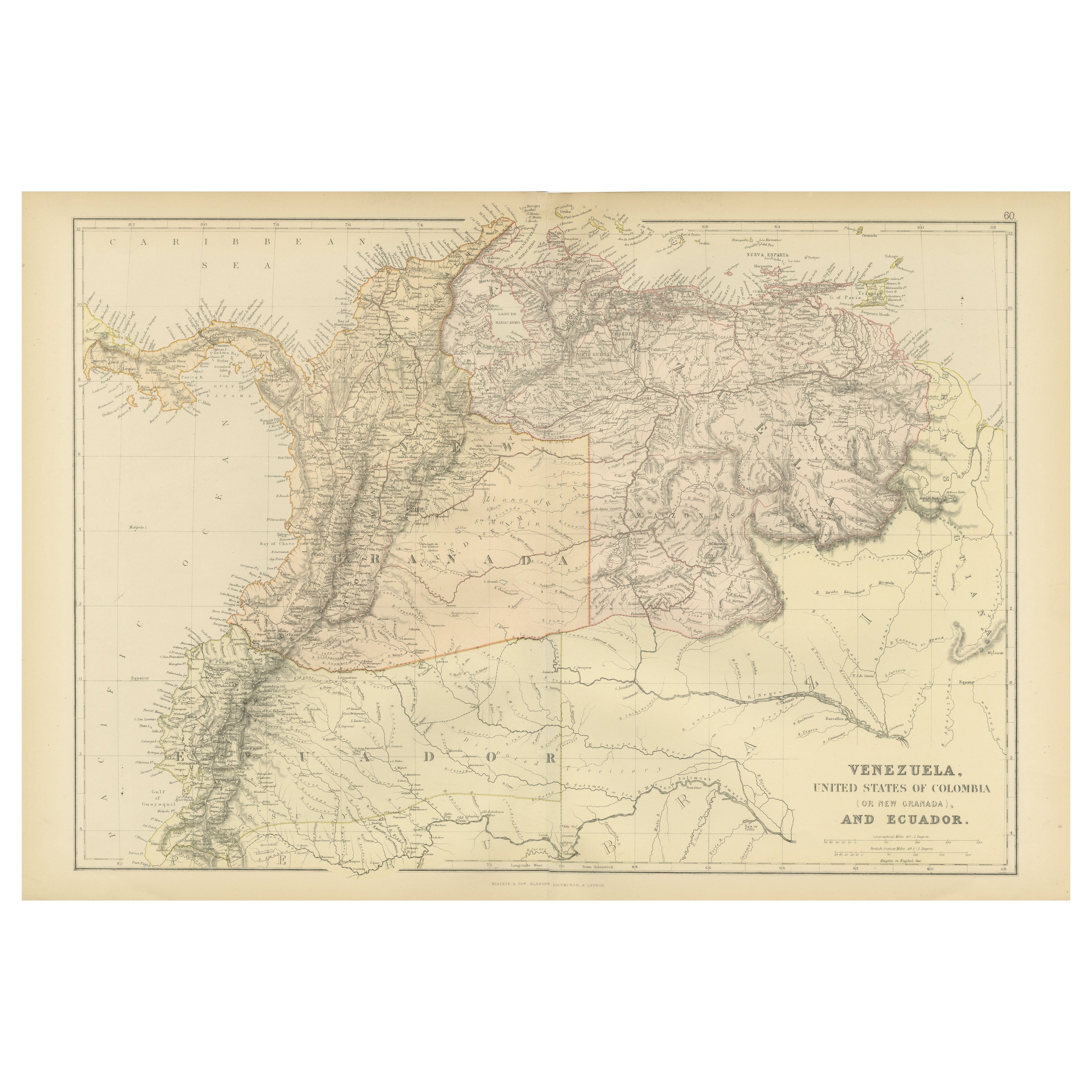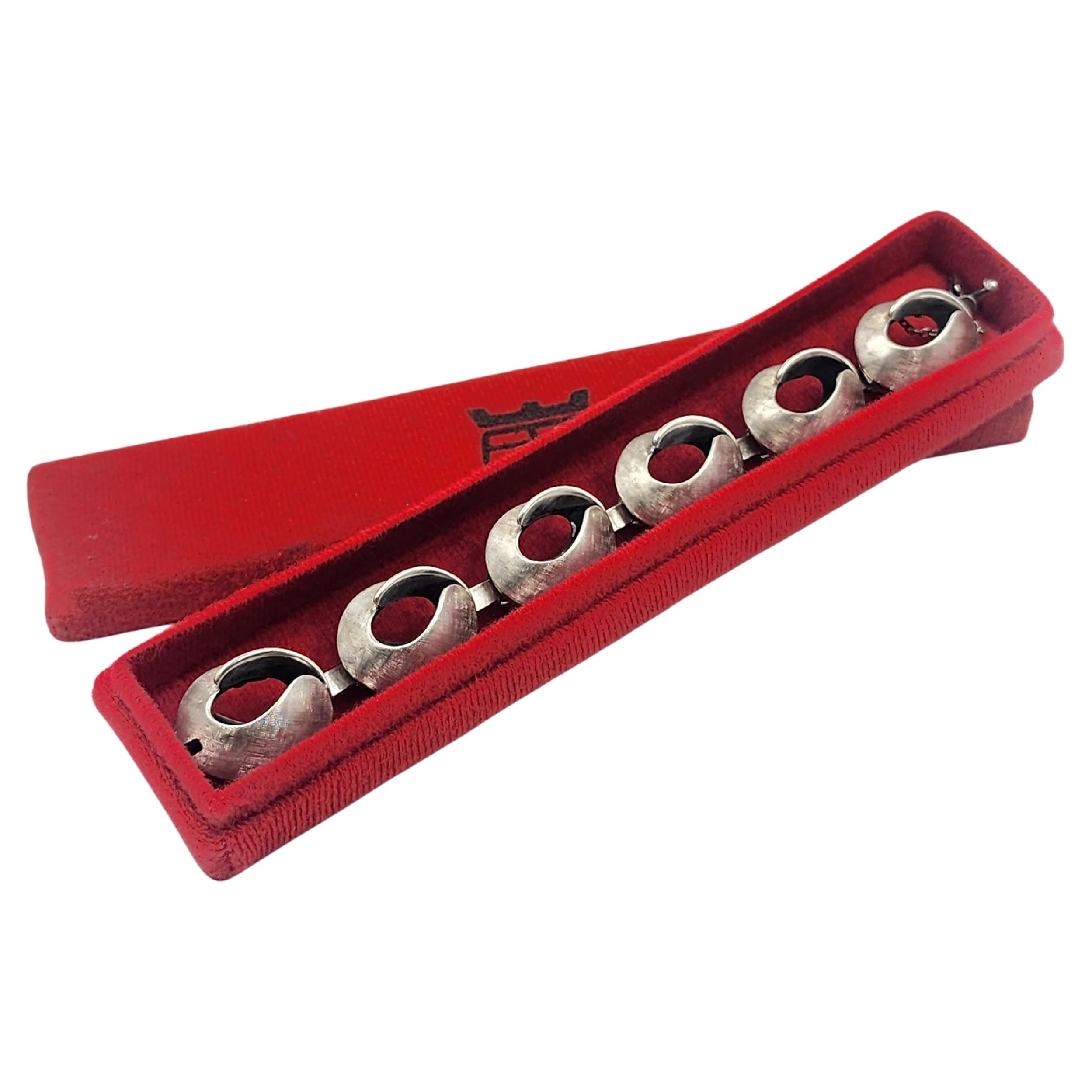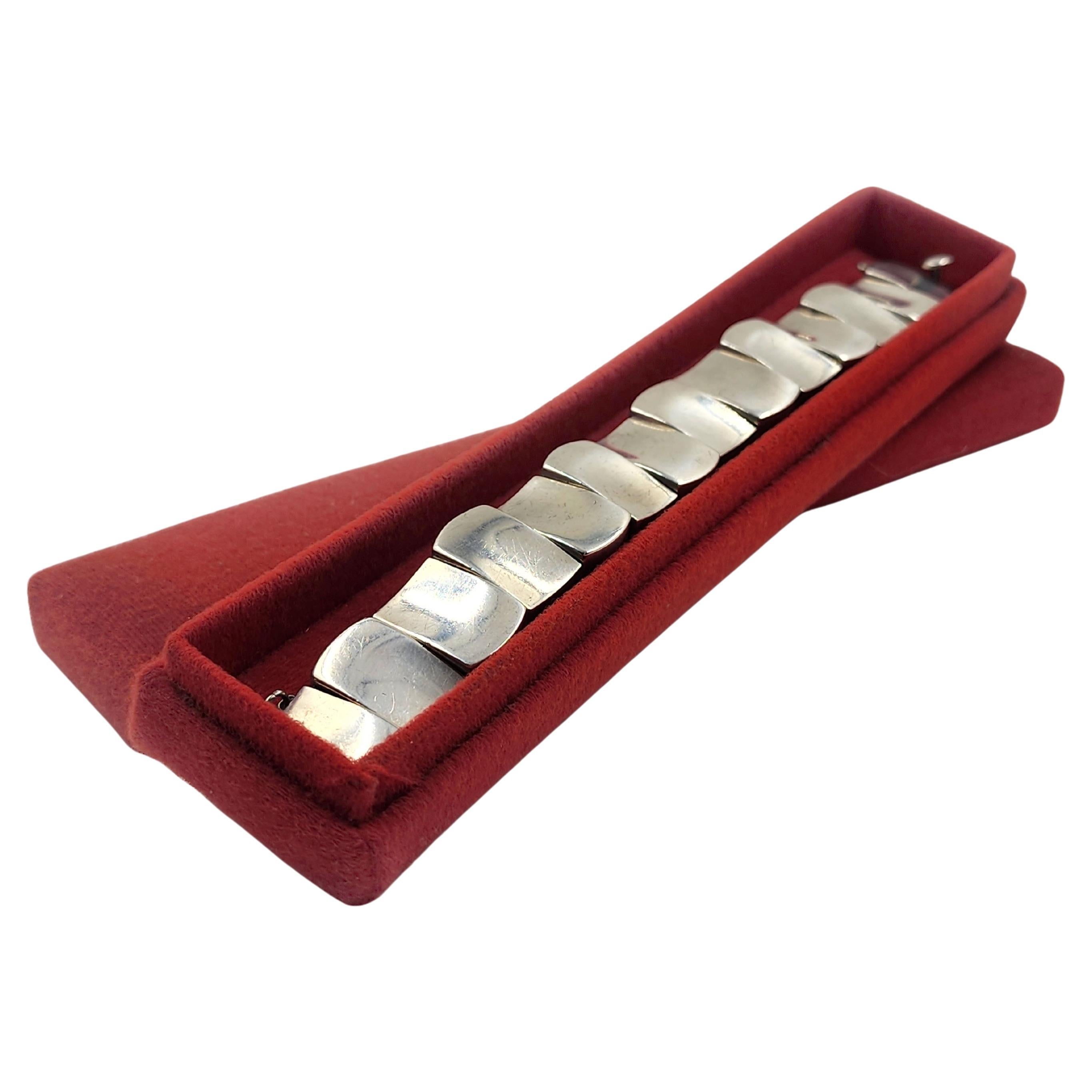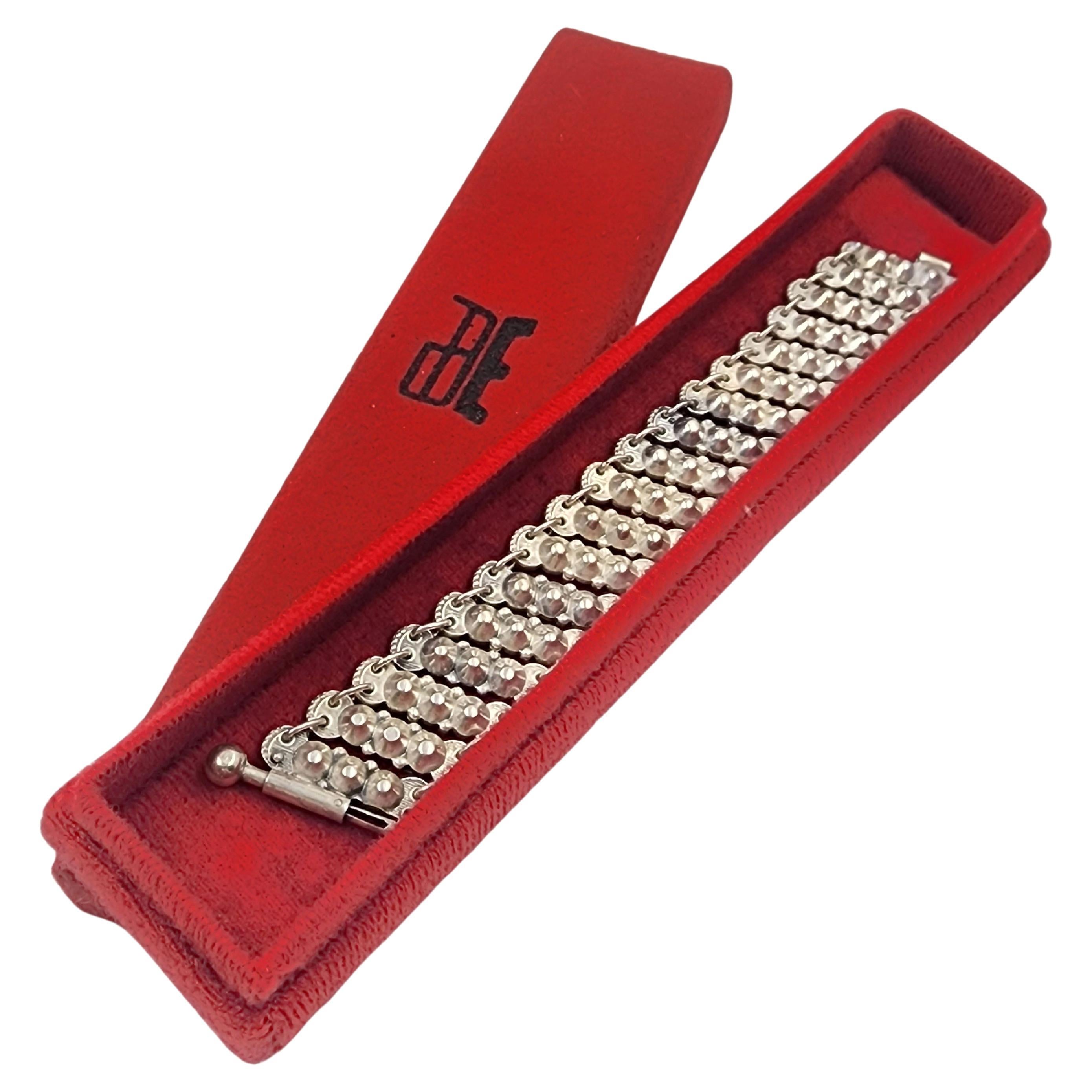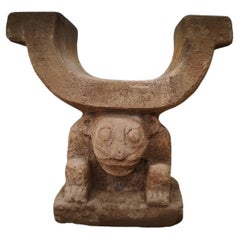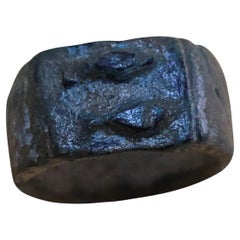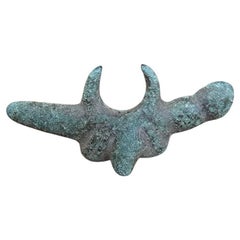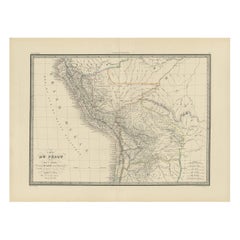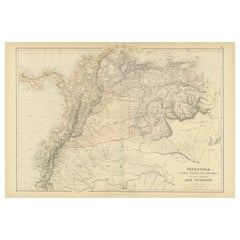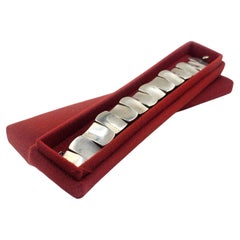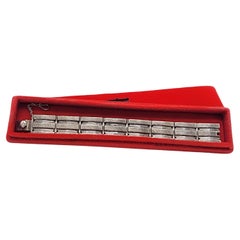Items Similar to Manteña Chair of Power Cachique of Prehispanic Ecuador 900 AD
Want more images or videos?
Request additional images or videos from the seller
1 of 21
Manteña Chair of Power Cachique of Prehispanic Ecuador 900 AD
About the Item
The chair has been carved from a block of
rock
These stone chairs are usually classified according to the iconographic motif carved in
the support of the seat, dividing mainly into two groups, anthropomorphic and zoomorphic
–or zooanthropomorphic, since they represent variations that combine animal traits, generally felines, with the human being– Our chair corresponds to the second type, with a pedestal in the shape of a zoomorphic feline.
The feline is represented crouching, flexing arms and legs knees and elbows. The upper part of the chair – the ‘U’ shaped seat – is superimposed on the
back, head and shoulders of the figure. The way to place the seat on the full body
marks the difference between this specimen and others also anthropomorphic, in which said seat is
load only on the head, arranging an intermediate padding element carved between
the seat and back of the figure. As a consequence, in this case the head remains embedded and
sunk between two powerful shoulders that protrude with rounded shapes at the same height
than that one
In these sculptures, more attention has been paid to the face than to the rest of the morphology.
of the body, so the figure does not usually keep anatomical proportionality. does not seem to exist
nor is it a stable rule when it comes to placing the seat on the figure, some are more
back than others on the back of the character that supports it, and the depth of the seat is also
quite variable. Of course, what characterizes the seat is the 'U' shape, and that most of
the chairs have horizontal lateral extensions at the ends of these arms,
forming a right angle. These extensions have been interpreted as armrests. In general,
In addition, the shape of the 'U' is wider at the base and narrows towards the upper end,
as can be seen in the profile of this chair
The chairs in the context of the Manteño-Huancavilca culture
The Manteño-Huancavilca culture developed on the south-central coast of Ecuador, between the Bay of
Caráquez and the island of Puná10, during the Integration period . Saville (1907) to
early 20th century, Jijón y Caamaño (1997), Bushnell (1951) or Emilio Estrada (1957, 1962), among
others, are outlining through some initial archaeological excavations the features that define
to this culture. In it, two groups are differentiated, the manteños to the north and the huancavilcas to the south,
with certain common cultural traits and other particular or differentiating ones. And among the latter
precisely the use of carved stone as a feature of the Manteños stands out -the group
from the north–, to whom therefore the so-called chairs belong. To this could be added
characteristic of the north the iconography of the feline, the abundance of figurines and graters or the burial
compared to burial in urns, more typical of the huancavilcas.
As suggested by McEwan , the chairs with feline images correspond to religious power.
Title: Chair of power.
Object: Ceremonial chair carved in stone, with a U-shaped seat, supported by a crouching ZOOMORPHIC figure.
Typology: Lithic sculpture.
Culture: Manteña (Manabi, Ecuador).
Dimensions: 43X36X23CM
Technique: Carving on stone block, sawn with cord.
Use/Function: Ritual, ceremonial.
Provenance: Collection Dr. Professor: Udo Oberem
(1923-1986)
On November 24, 1986, Udo Oberem died suddenly and unexpectedly in Bonn, just before his 63rd birthday. The deceased was a number professor of ethnology — with special regard for
Americanist studies („Alt-Amerikanistik") - at the Faculty of Philosophy of the University of Bonn and director of the Institute of Anthropology
Cultural.
Another similar chair can be found at: Musée du Quai Branly
Biography: Manteña chairs from pre-Hispanic Ecuador
Study, restoration and analysis of a chair
stone in the Museum of America
Andrés Gutiérrez Usillos (scientific editor)
Museum of America. Ministry of Education, Culture and Sport.
- Dimensions:Height: 14.18 in (36 cm)Width: 9.06 in (23 cm)Depth: 16.93 in (43 cm)
- Materials and Techniques:
- Period:
- Date of Manufacture:900
- Condition:
- Seller Location:Madrid, ES
- Reference Number:1stDibs: LU5779235227172
About the Seller
4.8
Platinum Seller
Premium sellers with a 4.7+ rating and 24-hour response times
Established in 2005
1stDibs seller since 2021
356 sales on 1stDibs
Typical response time: 1 hour
- ShippingRetrieving quote...Shipping from: Madrid, Spain
- Return Policy
Authenticity Guarantee
In the unlikely event there’s an issue with an item’s authenticity, contact us within 1 year for a full refund. DetailsMoney-Back Guarantee
If your item is not as described, is damaged in transit, or does not arrive, contact us within 7 days for a full refund. Details24-Hour Cancellation
You have a 24-hour grace period in which to reconsider your purchase, with no questions asked.Vetted Professional Sellers
Our world-class sellers must adhere to strict standards for service and quality, maintaining the integrity of our listings.Price-Match Guarantee
If you find that a seller listed the same item for a lower price elsewhere, we’ll match it.Trusted Global Delivery
Our best-in-class carrier network provides specialized shipping options worldwide, including custom delivery.More From This Seller
View AllManteña Chair of Power Cachique of Prehispanic Ecuador 900 AD
Located in Madrid, ES
MANTEÑA CHAIR OF POWER CACHIQUE OF PREHISPANIC ECUADOR
The chair has been carved from a block of
detrital sedimentary rock, in which fossil remains can be seen. It is a calcarenite o...
Category
Antique 15th Century and Earlier Animal Sculptures
Materials
Stone
$45,659 Sale Price
20% Off
Roman Bronze Ring – 1st Century AD
Located in Madrid, ES
An interesting Roman ring from the 1st century AD, cast in bronze and decorated with an engraved motif of two fish facing each other, a common symbol in the ancient world, associated...
Category
Antique 15th Century and Earlier Italian Classical Roman Collectible Jew...
Materials
Bronze
Roman Bronze Amulet, 1st–2nd Century AD
Located in Madrid, ES
Authentic Roman bronze amulet, dating between the 1st and 2nd centuries AD, at the height of the Roman Empire. This piece has a beautiful natural patina that attests to its age and a...
Category
Antique 15th Century and Earlier European Classical Roman Collectible Je...
Materials
Bronze
$353 / item
Roman Bronze Phallic Amulet, 1st–2nd Century AD
Located in Madrid, ES
Authentic Roman bronze amulet, dating between the 1st and 2nd centuries AD, at the height of the Roman Empire. This piece has a beautiful natural patina that attests to its age and a...
Category
Antique 15th Century and Earlier European Classical Roman Collectible Je...
Materials
Bronze
Roman Bronze Phallic Amulet, 1st–2nd Century AD
Located in Madrid, ES
A finely cast Roman bronze phallic amulet from the 1st to 2nd century AD, this diminutive yet powerful artifact embodies the deeply rooted Roman tradition of apotropaic symbolism. Kn...
Category
Antique 15th Century and Earlier European Classical Roman Collectible Je...
Materials
Bronze
Rare Roman Bronze Phallic Amulet, 1st–2nd Century AD
Located in Madrid, ES
An exceptional example of ancient Roman craftsmanship, this rare bronze amulet dates to the height of the Roman Empire, circa 1st–2nd century AD. Cast in solid bronze with a striking...
Category
Antique 15th Century and Earlier European Classical Roman Collectible Je...
Materials
Bronze
You May Also Like
Antique Map of Peru, Ecuador and Bolivia by Lapie, 1842
Located in Langweer, NL
Antique map titled 'Carte du Perou et du Haut Perou'. Map of Peru, Ecuador and Bolivia. This map originates from 'Atlas universel de géographie ancienne et...
Category
Antique 19th Century Maps
Materials
Paper
$225 Sale Price
20% Off
Antique 1882 Map of Venezuela, Colombia (New Granada), and Ecuador
Located in Langweer, NL
Title: 1882 Map of Venezuela, Colombia (New Granada), and Ecuador
This map from 1882 provides a detailed representation of Venezuela, the United States of Colombia (historically ref...
Category
Antique 1880s Maps
Materials
Paper
Vintage 900 silver Belgiorno bracelet
By Antonio Belgiorno
Located in Autonomous City Buenos Aires, CABA
Vintage 900 silver Belgiorno bracelet
This stunning 900 silver bracelet features a sculptural design with curvilinear plates 2 cm wide and 3 mm thick. With a unique finish and full o...
Category
20th Century Argentine Post-Modern Collectible Jewelry
Materials
Sterling Silver
$800 / item
Belgiorno 900 Silver Designer Bracelet
By Antonio Belgiorno
Located in Autonomous City Buenos Aires, CABA
Belgiorno 900 Silver Designer Bracelet
This dazzling Belgiorno bracelet, crafted in 900 silver, is an ode to minimalist elegance. Its rectangular links, with a subtle satin finish, h...
Category
20th Century Post-Modern Collectible Jewelry
Materials
Sterling Silver
Vintage Belgiorno 900 silver bracelet
By Antonio Belgiorno
Located in Autonomous City Buenos Aires, CABA
Belgiorno Vintage 900 Silver Bracelet
This exquisite vintage Belgiorno bracelet, crafted in 900 silver, is a piece that evokes the elegance of the 1960s. Its design features intricat...
Category
20th Century Argentine Post-Modern Collectible Jewelry
Materials
Sterling Silver
Vintage 900 Silver Belgiorno Bracelet
By Antonio Belgiorno
Located in Autonomous City Buenos Aires, CABA
Vintage Belgiorno 900 Silver Bracelet
This Belgiorno 900 silver bracelet, with a distinctive link design from the 1970s, reflects classic Italian elegance and craftsmanship. The geom...
Category
20th Century Argentine Post-Modern Collectible Jewelry
Materials
Sterling Silver
Recently Viewed
View AllMore Ways To Browse
Antique Graters
Estrada Chairs
Garden Egg By Peter Ghyczy
Garden Egg Chair By Peter Ghyczy
Genick 1883
Georg Jensen 84
Georg Jensen Acorn Flatware Set
Georg Jensen Magnolia
Georg Jensen Viking
George Briard Dishes
George Briard Gold Dishes
George Ii Silver Coffee Pot
George Nelson Table Rosewood
German 800 Silver Plates
German Porcelain Dinnerware Set
German Silver Beaker
Gerold Germany
Gianfranco Frattini For Cassina Nesting Tables
